Cover
Digital Image Processing Using MATLAB, 2nd Edition
ISBN 978-0-9820854-0-0
Contents
Preface
Acknowledgements
The Book Web Site
About the Authors
1 Introduction
Preview
1.1 Background
1.2 What Is Digital Image Processing?
1.3 Background on MATLAB and the Image Processing Toolbox
1.4 Areas of Image Processing Covered in the Book
1.5 The Book Web Site
1.6 Notation
1.7 The MATLAB Desktop
1.7.1 Using the MATLAB Editor/Debugger
1.7.2 Getting Help
1.7.3 Saving and Retrieving Work Session Data
1.8 How References Are Organized in the Book
Summary
2 Fundamentals
Preview
2.1 Digital Image Representation
2.1.1 Coordinate Conventions
2.1.2 Images as Matrices
2.2 Reading Images
2.3 Displaying Images
2.4 Writing Images
2.5 Classes
2.6 Image Types
2.6.1 Gray-scale Images
2.6.2 Binary Images
2.6.3 A Note on Terminology
2.7 Converting between Classes
2.8 Array Indexing
2.8.1 Indexing Vectors
2.8.2 Indexing Matrices
2.8.3 Indexing with a Single Colon
2.8.4 Logical Indexing
2.8.5 Linear Indexing
2.8.6 Selecting Array Dimensions
2.8.7 Sparse Matrices
2.9 Some Important Standard Arrays
2.10 Introduction to M-Function Programming
2.10.1 M-Files
2.10.2 Operators
2.10.3 Flow Control
2.10.4 Function Handles
2.10.5 Code Optimization
2.10.6 Interactive I/O
2.10.7 An Introduction to Cell Arrays and Structures
Summary
3 Intensity Transformations and Spatial Filtering
Preview
3.1 Background
3.2 Intensity Transformation Functions
3.2.1 Functions imadjust and stretchlim
3.2.2 Logarithmic and Contrast-Stretching Transformations
3.2.3 Specifying Arbitrary Intensity Transformations
3.2.4 Some Utility M-functions for Intensity Transformations
3.3 Histogram Processing and Function Plotting
3.3.1 Generating and Plotting Image Histograms
3.3.2 Histogram Equalization
3.3.3 Histogram Matching (Specification)
3.3.4 Function adapthisteq
3.4 Spatial Filtering
3.4.1 Linear Spatial Filtering
3.4.2 Nonlinear Spatial Filtering
3.5 Image Processing Toolbox Standard Spatial Filters
3.5.1 Linear Spatial Filters
3.5.2 Nonlinear Spatial Filters
3.6 Using Fuzzy Techniques for Intensity Transformations and Spatial Filtering
3.6.1 Background
3.6.2 Introduction to Fuzzy Sets
3.6.3 Using Fuzzy Sets
3.6.4 A Set of Custom Fuzzy M-functions
3.6.5 Using Fuzzy Sets for Intensity Transformations
3.6.6 Using Fuzzy Sets for Spatial Filtering
Summary
4 Filtering in the Frequency Domain
Preview
4.1 The 2-D Discrete Fourier Transform
4.2 Computing and Visualizing the 2-D DFT in MATLAB
4.3 Filtering in the Frequency Domain
4.3.1 Fundamentals
4.3.2 Basic Steps in DFT Filtering
4.3.3 An M-function for Filtering in the Frequency Domain
4.4 Obtaining Frequency Domain Filters from Spatial Filters
4.5 Generating Filters Directly in the Frequency Domain
4.5.1 Creating Meshgrid Arrays for Use in Implementing Filters in the Frequency Domain
4.5.2 Lowpass (Smoothing) Frequency Domain Filters
4.5.3 Wireframe and Surface Plotting
4.6 Highpass (Sharpening) Frequency Domain Filters
4.6.1 A Function for Highpass Filtering
4.6.2 High-Frequency Emphasis Filtering
4.7 Selective Filtering
4.7.1 Bandreject and Bandpass Filters
4.7.2 Notchreject and Notchpass Filters
Summary
5 Image Restoration and Reconstruction
Preview
5.1 A Model of the Image Degradation/Restoration Process
5.2 Noise Models
5.2.1 Adding Noise to Images with Function imnoise
5.2.2 Generating Spatial Random Noise with a Specified Distribution
5.2.3 Periodic Noise
5.2.4 Estimating Noise Parameters
5.3 Restoration in the Presence of Noise Only—Spatial Filtering
5.3.1 Spatial Noise Filters
5.3.2 Adaptive Spatial Filters
5.4 Periodic Noise Reduction Using Frequency Domain Filtering
5.5 Modeling the Degradation Function
5.6 Direct Inverse Filtering
5.7 Wiener Filtering
5.8 Constrained Least Squares (Regularized) Filtering
5.9 Iterative Nonlinear Restoration Using the Lucy-Richardson Algorithm
5.10 Blind Deconvolution
5.11 Image Reconstruction from Projections
5.11.1 Background
5.11.2 Parallel-Beam Projections and the Radon Transform
5.11.3 The Fourier Slice Theorem and Filtered Backprojections
5.11.4 Filter Implementation
5.11.5 Reconstruction Using Fan-Beam Filtered Backprojections
5.11.6 Function radon
5.11.7 Function iradon
5.11.8 Working with Fan-Beam Data
Summary
6 Geometric Transformations and Image Registration
Preview
6.1 Transforming Points
6.2 Affine Transformations
6.3 Projective Transformations
6.4 Applying Geometric Transformations to Images
6.5 Image Coordinate Systems in MATLAB
6.5.1 Output Image Location
6.5.2 Controlling the Output Grid
6.6 Image Interpolation
6.6.1 Interpolation in Two Dimensions
6.6.2 Comparing Interpolation Methods
6.7 Image Registration
6.7.1 Registration Process
6.7.2 Manual Feature Selection and Matching Using cpselect
6.7.3 Inferring Transformation Parameters Using cp2tform
6.7.4 Visualizing Aligned Images
6.7.5 Area-Based Registration
6.7.6 Automatic Feature-Based Registration
Summary
7 Color Image Processing
Preview
7.1 Color Image Representation in MATLAB
7.1.1 RGB Images
7.1.2 Indexed Images
7.1.3 Functions for Manipulating RGB and Indexed Images
7.2 Converting Between Color Spaces
7.2.1 NTSC Color Space
7.2.2 The YCbCr Color Space
7.2.3 The HSV Color Space
7.2.4 The CMY and CMYK Color Spaces
7.2.5 The HSI Color Space
7.2.6 Device-Independent Color Spaces
7.3 The Basics of Color Image Processing
7.4 Color Transformations
7.5 Spatial Filtering of Color Images
7.5.1 Color Image Smoothing
7.5.2 Color Image Sharpening
7.6 Working Directly in RGB Vector Space
7.6.1 Color Edge Detection Using the Gradient
7.6.2 Image Segmentation in RGB Vector Space
Summary
8 Wavelets
Preview
8.1 Background
8.2 The Fast Wavelet Transform
8.2.1 FWTs Using the Wavelet Toolbox
8.2.2 FWTs without the Wavelet Toolbox
8.3 Working with Wavelet Decomposition Structures
8.3.1 Editing Wavelet Decomposition Coefficients without the Wavelet Toolbox
8.3.2 Displaying Wavelet Decomposition Coefficients
8.4 The Inverse Fast Wavelet Transform
8.5 Wavelets in Image Processing
Summary
9 Image Compression
Preview
9.1 Background
9.2 Coding Redundancy
9.2.1 Huffman Codes
9.2.2 Huffman Encoding
9.2.3 Huffman Decoding
9.3 Spatial Redundancy
9.4 Irrelevant Information
9.5 JPEG Compression
9.5.1 JPEG
9.5.2 JPEG 2000
9.6 Video Compression
9.6.1 MATLAB Image Sequences and Movies
9.6.2 Temporal Redundancy and Motion Compensation
Summary
10 Morphological Image Processing
Preview
10.1 Preliminaries
10.1.1 Some Basic Concepts from Set Theory
10.1.2 Binary Images, Sets, and Logical Operators
10.2 Dilation and Erosion
10.2.1 Dilation
10.2.2 Structuring Element Decomposition
10.2.3 The strel Function
10.2.4 Erosion
10.3 Combining Dilation and Erosion
10.3.1 Opening and Closing
10.3.2 The Hit-or-Miss Transformation
10.3.3 Using Lookup Tables
10.3.4 Function bwmorph
10.4 Labeling Connected Components
10.5 Morphological Reconstruction
10.5.1 Opening by Reconstruction
10.5.2 Filling Holes
10.5.3 Clearing Border Objects
10.6 Gray-Scale Morphology
10.6.1 Dilation and Erosion
10.6.2 Opening and Closing
10.6.3 Reconstruction
Summary
11 Image Segmentation
Preview
11.1 Point, Line, and Edge Detection
11.1.1 Point Detection
11.1.2 Line Detection
11.1.3 Edge Detection Using Function edge
11.2 Line Detection Using the Hough Transform
11.2.1 Background
11.2.2 Toolbox Hough Functions
11.3 Thresholding
11.3.1 Foundation
11.3.2 Basic Global Thresholding
11.3.3 Optimum Global Thresholding Using Otsu's Method
11.3.4 Using Image Smoothing to Improve Global Thresholding
11.3.5 Using Edges to Improve Global Thresholding
11.3.6 Variable Thresholding Based on Local Statistics
11.3.7 Image Thresholding Using Moving Averages
11.4 Region-Based Segmentation
11.4.1 Basic Formulation
11.4.2 Region Growing
11.4.3 Region Splitting and Merging
11.5 Segmentation Using the Watershed Transform
11.5.1 Watershed Segmentation Using the Distance Transform
11.5.2 Watershed Segmentation Using Gradients
11.5.3 Marker-Controlled Watershed Segmentation
Summary
12 Representation and Description
Preview
12.1 Background
12.1.1 Functions for Extracting Regions and Their Boundaries
12.1.2 Some Additional MATLAB and Toolbox Functions Used in This Chapter
12.1.3 Some Basic Utility M-Functions
12.2 Representation
12.2.1 Chain Codes
12.2.2 Polygonal Approximations Using Minimum-Perimeter Polygons
12.2.3 Signatures
12.2.4 Boundary Segments
12.2.5 Skeletons
12.3 Boundary Descriptors
12.3.1 Some Simple Descriptors
12.3.2 Shape Numbers
12.3.3 Fourier Descriptors
12.3.4 Statistical Moments
12.3.5 Corners
12.4 Regional Descriptors
12.4.1 Function regionprops
12.4.2 Texture
12.4.3 Moment Invariants
12.5 Using Principal Components for Description
Summary
13 Object Recognition
Preview
13.1 Background
13.2 Computing Distance Measures in MATLAB
13.3 Recognition Based on Decision-Theoretic Methods
13.3.1 Forming Pattern Vectors
13.3.2 Pattern Matching Using Minimum-Distance Classifiers
13.3.3 Matching by Correlation
13.3.4 Optimum Statistical Classifiers
13.3.5 Adaptive Learning Systems
13.4 Structural Recognition
13.4.1 Working with Strings in MATLAB
13.4.2 String Matching
Summary
Appendix A: M-Function Summary
Appendix B: ICE and MATLAB Graphical User Interfaces
Appendix C: Additional Custom M-functions
Bibliography
Index
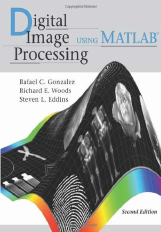
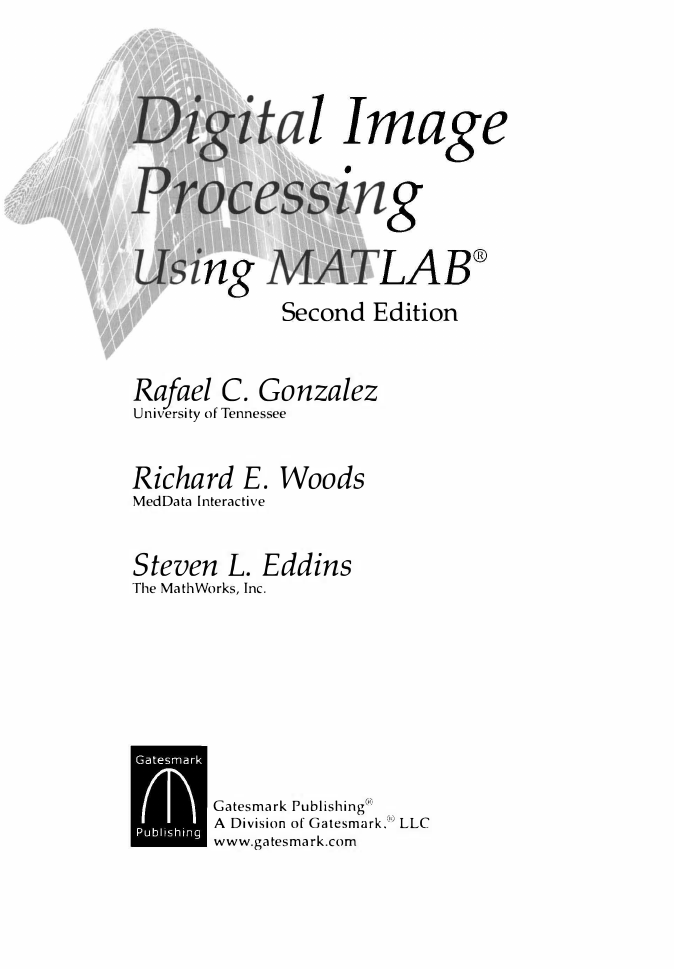
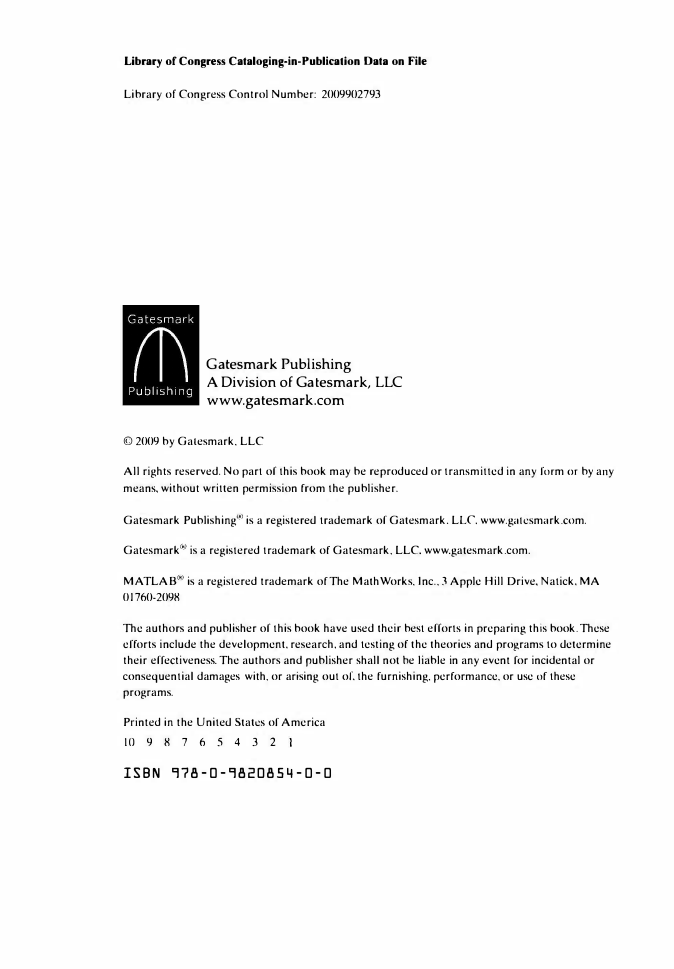
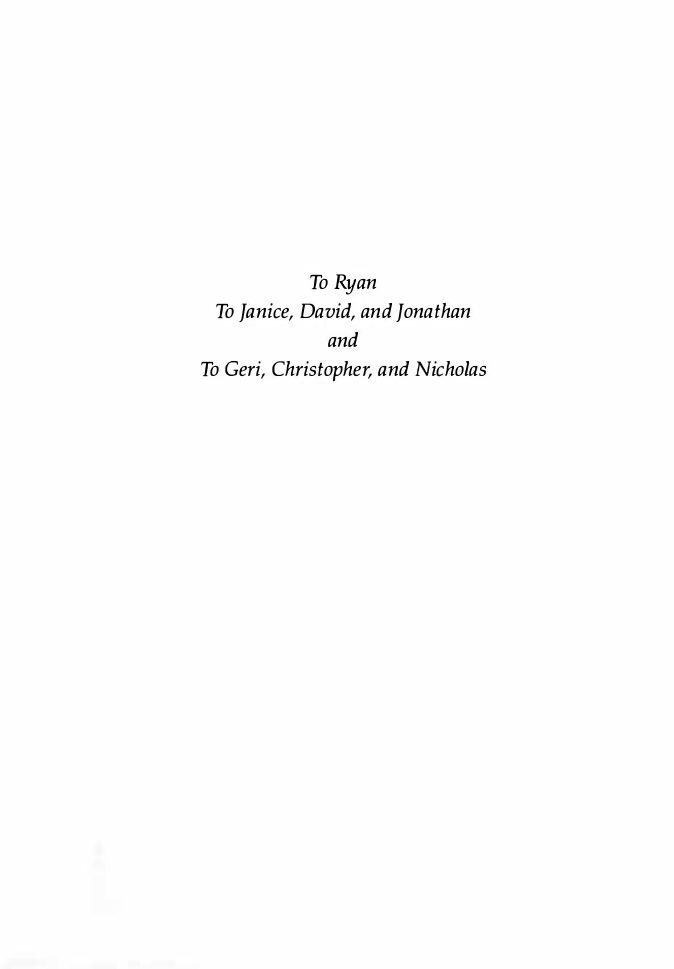

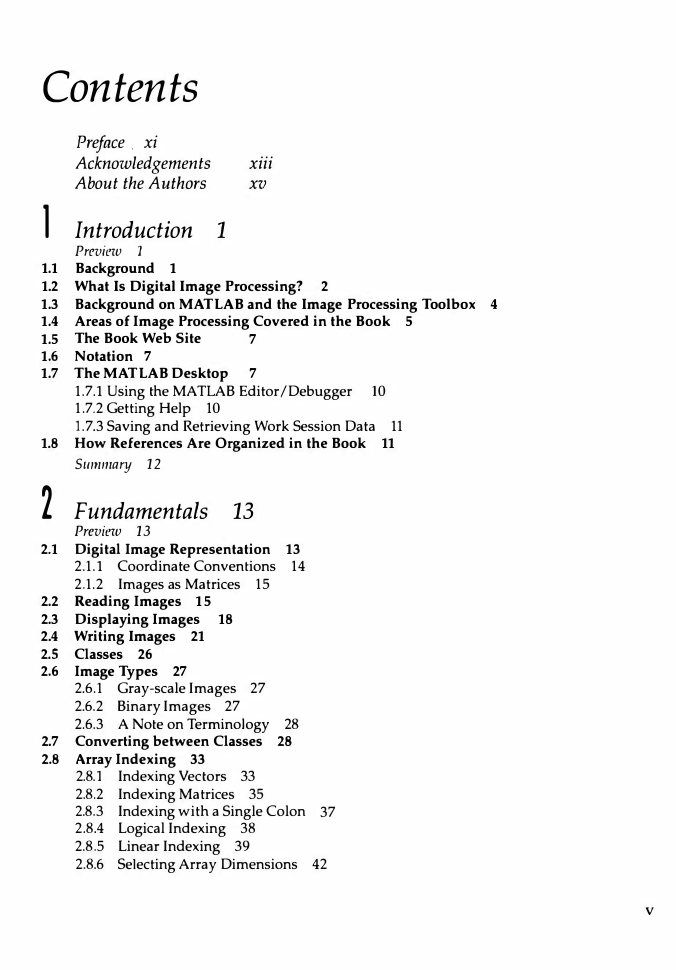

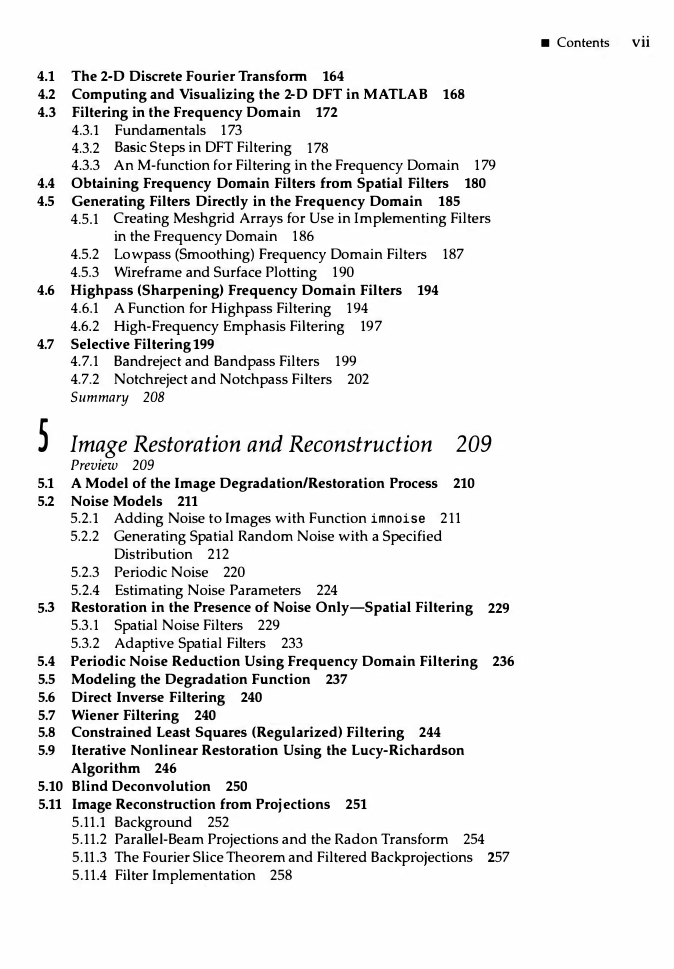








 2023年江西萍乡中考道德与法治真题及答案.doc
2023年江西萍乡中考道德与法治真题及答案.doc 2012年重庆南川中考生物真题及答案.doc
2012年重庆南川中考生物真题及答案.doc 2013年江西师范大学地理学综合及文艺理论基础考研真题.doc
2013年江西师范大学地理学综合及文艺理论基础考研真题.doc 2020年四川甘孜小升初语文真题及答案I卷.doc
2020年四川甘孜小升初语文真题及答案I卷.doc 2020年注册岩土工程师专业基础考试真题及答案.doc
2020年注册岩土工程师专业基础考试真题及答案.doc 2023-2024学年福建省厦门市九年级上学期数学月考试题及答案.doc
2023-2024学年福建省厦门市九年级上学期数学月考试题及答案.doc 2021-2022学年辽宁省沈阳市大东区九年级上学期语文期末试题及答案.doc
2021-2022学年辽宁省沈阳市大东区九年级上学期语文期末试题及答案.doc 2022-2023学年北京东城区初三第一学期物理期末试卷及答案.doc
2022-2023学年北京东城区初三第一学期物理期末试卷及答案.doc 2018上半年江西教师资格初中地理学科知识与教学能力真题及答案.doc
2018上半年江西教师资格初中地理学科知识与教学能力真题及答案.doc 2012年河北国家公务员申论考试真题及答案-省级.doc
2012年河北国家公务员申论考试真题及答案-省级.doc 2020-2021学年江苏省扬州市江都区邵樊片九年级上学期数学第一次质量检测试题及答案.doc
2020-2021学年江苏省扬州市江都区邵樊片九年级上学期数学第一次质量检测试题及答案.doc 2022下半年黑龙江教师资格证中学综合素质真题及答案.doc
2022下半年黑龙江教师资格证中学综合素质真题及答案.doc